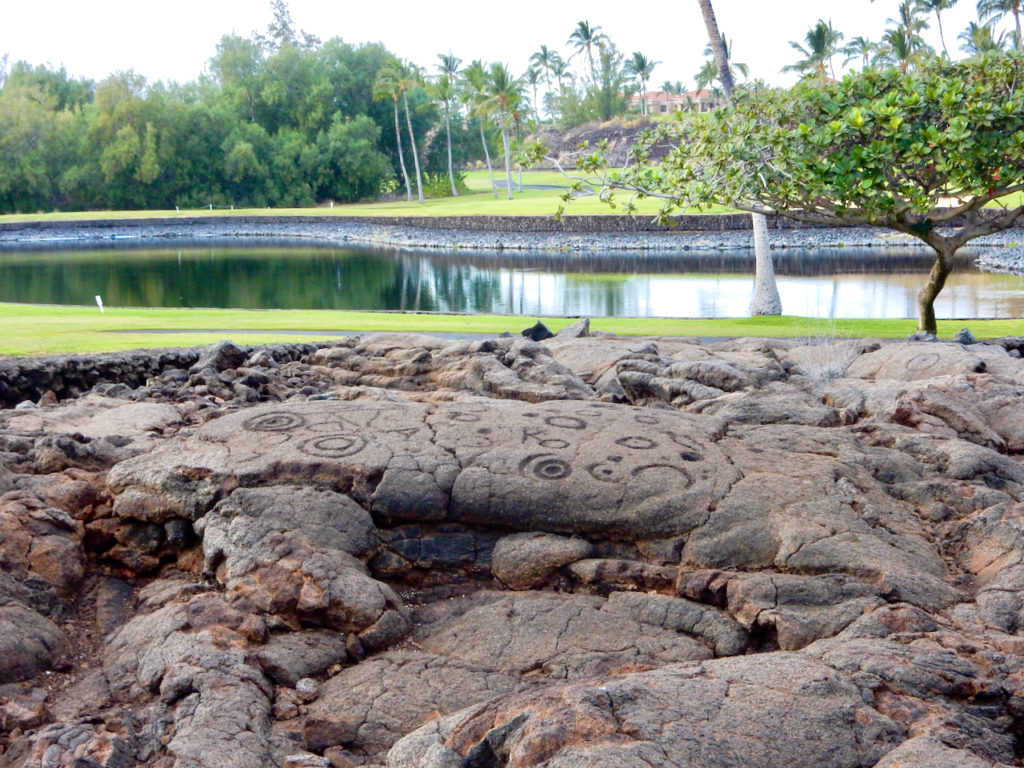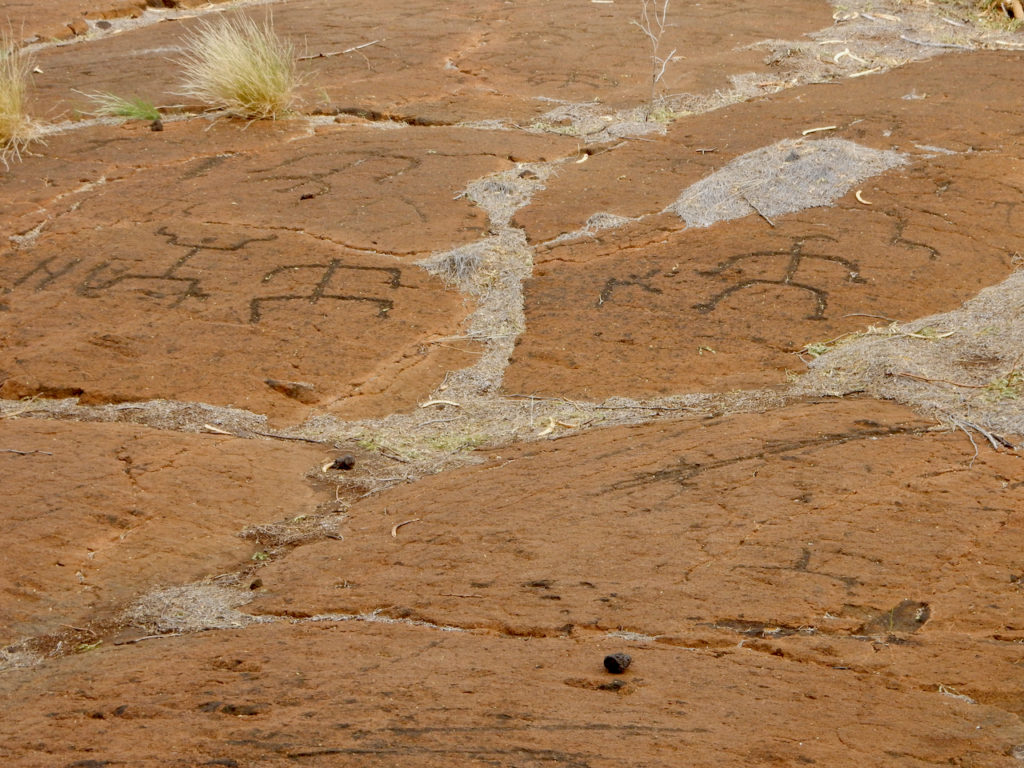
Like many mainlanders, I suspect, I always thought of Hawaii as beaches, surfers, tropical foliage, Diamond Head, and not much more.
But it also is home to thousands and thousands of rock carvings, with exceptional concentrations cut into the lava on the Big Island. Their age isn’t known with certainty, but some could be close to a thousand years old, with the most recent being from the late 19th century.
The petroglyphs’ meaning is uncertain. The accounts that have come down to scholars came via not-always reliable messengers (i.e., westerners who recorded what they think they were told by native Hawaiians, whose accuracy is itself uncertain).
The one certainty is location, which does allow some surmises about what might have been intended. The petroglyphs tend to be concentrated at specific sites, often on ancient trails and often near locations with spiritual significance — temples, shrines and the like. Some large-scale aggregations are on known tribal boundaries.
It seems certain that at least some of the carvings had spiritual and ritual functions. Others may have been more like historical records of travels or of families. Some may relate to regulating tribal boundaries. One likely explanation is that at least one type of carving, small circles, or “cupules,” originated as part of a ritual to ensure long life for newborns, whose umbilical cords or stumps were placed in or near the cups.
Even if there was more certain intelligence on the intentions of the creators, the meaning of any bit of human communication is never fixed. What these petroglyphs, created over hundreds of years, meant to their makers may not be what they meant to the Hawaiians of a hundred or two hundred years later, or what they mean today to anyone who chances to be observing them.
For those that originated in a ritual function, it’s a good guess that the creators did not worry much about what people hundreds of years later would think about their carvings. That can free us to some extent to apply our own meanings to their work. Ideally, though, we’d still try to show some due respect to what we surmise to be their intentions, informed by what we do know about the culture from which the petroglyphs emerged.
Of course, some of the carvers might have found it gratifying that people of the future would see and appreciate their work, be it a record of travels, documentation of a family group, or a spiritual statement.
In any case, the petroglyphs are a spectacular survival of the ancient Hawaiian culture, available for viewing to anyone visiting the islands.
Here are galleries of petroglyphs from three of the main sites.
If you’re interested in drilling deeper into the petroglyphs, I highly recommend Spirit of Place: Petroglyphs of Hawaii, by Georgia Lee and Edward Stasack. It seems to be the most authoritative account of what we know about the carvings, and the difficulties of knowing what we know. The extensive data it lays out reflects an impressive amount of research, and the authors also appreciate the aesthetic impact of the petroglyphs. The book is out of print and copies are expensive, but you might try the library.





